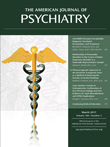Psychiatrists and pediatricians are still preoccupied with the question of a causal relationship between vaccines and autism spectrum disorders but not because of any burning scientific curiosity. Spurred on by antivaccine advocates, celebrities, journalists, and the now disgraced British gastroenterologist Andrew Wakefield, who falsely alleged a connection between autism and the measles-mumps-rubella vaccine, parents are delaying childhood vaccines or deciding against vaccination altogether. Herd immunity has been compromised, especially in the western United States, and diseases that had been under control—for example, Haemophilus influenza type B and measles—are staging a comeback. In 2010, the state of California declared an epidemic of pertussis. Moreover, parents are subjecting their children to a range of alternative and unproven treatments for autism, some of which can be dangerous, like chelation and antiviral and antifungal therapies. The doctors who specialize in so-called biomedical treatments for autism claim that their therapies counteract the toxins in vaccines or vaccine ingredients.
Seth Mnookin's The Panic Virus, along with Paul Offit's Deadly Choices, both released in January 2011, contains enough evidence about the origins and structure of the vaccine myth to put the causation hypothesis to rest. Mnookin takes on the antivaccine movement with the skill of a journalist and the intellectual concerns of a sociologist. In this riveting book, filled with fascinating human interest stories, he also manages to explain why, even though science has so clearly shown that the evidence argues against a relationship between vaccines and autism, so many people still believe there is one. In order to answer this question, Mnookin takes the reader through the turbulent but triumphant history of vaccines, the evolution of the autism diagnosis, and the growth of celebrity citizen science. He argues that while antivaccine hysteria has existed since the 1700s when the smallpox vaccine was first developed, the democratization of science has created a special problem in the 21st century: the Internet provides a diverse array of information but also empowers users to trust their own expertise and to find validation from individuals and groups that share their opinions.
Most Americans celebrate the new availability of information. Access to the knowledge of the intellectual elite affirms our democratic ideals. But as with Jacksonian democracy during the 1830s, when the masses became convinced that they were just as capable and knowledgeable as doctors (and nearly put all American medical schools out of business), there is a dark side. The typical reader does not necessarily understand how to discriminate between or evaluate the validity of different sources. For many Internet users, a blogger's opinion and a peer-reviewed scientific article may have equal weight. The Internet thus empowers conspiracy theorists as well as fringe researchers who carry out junk science and disseminate research results and interpretations favorable to the antivaccine movement.
Mnookin is brutally clear in his sustained attack on every corner of the antivaccine movement, especially attorneys. He notes that the lawyers who represented the Cedillo family, whose case in vaccine court alleging that their daughter had been made autistic by the measles vaccine served as one of the test cases in the Autism Omnibus hearings, “convinced the Cedillos to act as front-line troops in a war built on lies” (p. 297). He states that Sallie Bernard's widely publicized essay “Autism: A Novel Form of Mercury Poisoning” was “novel” only in that “it was entirely fictional” (p. 145). He shows that the scientists who purported a vaccine-autism link were essentially making things up as they went along. In testimony before the vaccine court, for example, the justice department asked one of the Cedillos' central witnesses, pediatric neurologist Marcel Kinsbourne, why he did not include measles as a cause of autism in a book chapter he wrote about development disorders but made the argument in his testimony for the Cedillo case. As Mnookin reports it, Kinsbourne replied, “The hypothesis was made less than three or four weeks ago” (p. 288), just before the omnibus hearings began.
Mnookin spares no one, but he pays special attention to antivaccine activists Robert F. Kennedy, Jr., Andrew Wakefield, and the former Playboy playmate Jenny McCarthy, whose crusade against vaccines through speeches, books, and appearances on national television has attracted a wide following. Mnookin also criticizes comedian Jim Carrey, Oprah Winfrey, Larry King, and Don Imus, among others, for voicing or giving voice to the opinion that autism and the increased prevalence of autism is a function of government, the pharmaceutical industry, and unscrupulous or neglectful doctors and public health officials.
Mnookin is particularly strong when describing the classic problem in science education: that science often moves methodically and produces results that are unacceptable to lay audiences in need of clear, simple answers. Indeed, the fear of vaccines continues to be fueled by scientists' inability to satisfy parents' concerns about the etiology of autism as well as by the incremental nature of science itself. As scientists conduct more research, they posit more hypotheses; each hypothesis introduces another level of uncertainty and raises another theoretical possibility. Scientists are trained to accept uncertainty, but the typical parent with an autistic child is not. In other words, the antivaccine advocates want something science will never be able to provide: expeditious and total proof, as opposed to the preponderance of the evidence, and single as opposed to multifactorial causes. Mnookin knows that the best science is rarely as convincing as the words of friends, neighbors, and anecdotes. The Panic Virus is a superb case study in the crisis of science in a democratic society.

